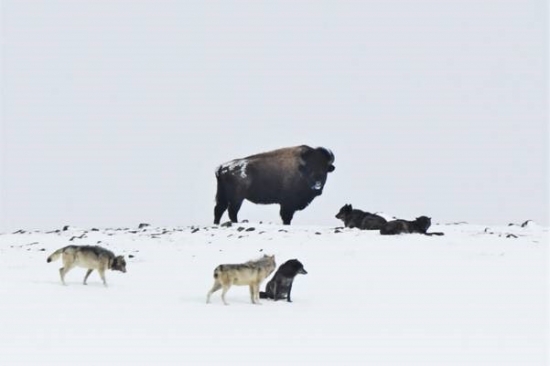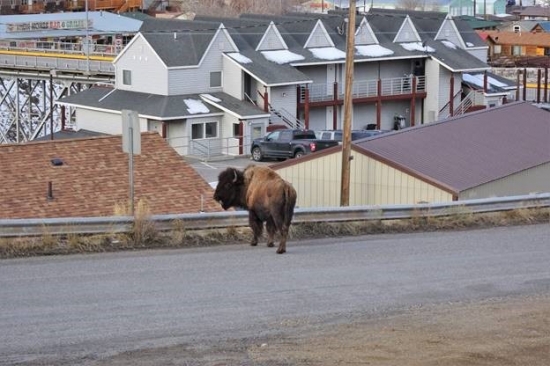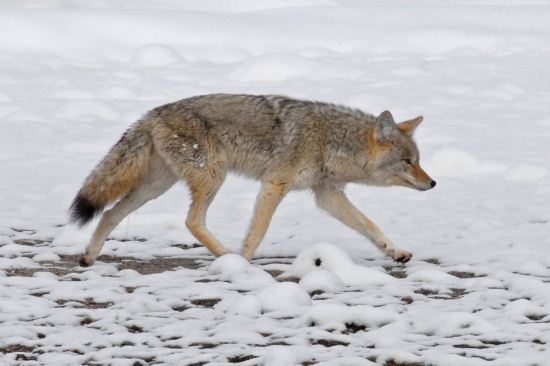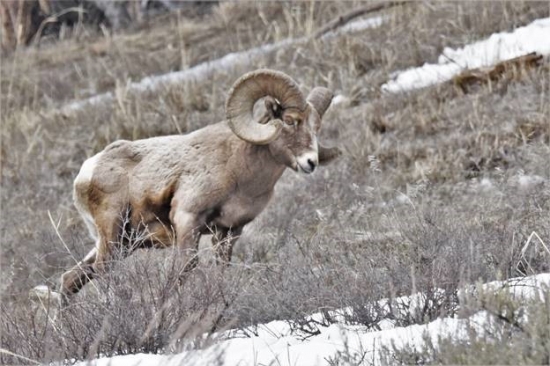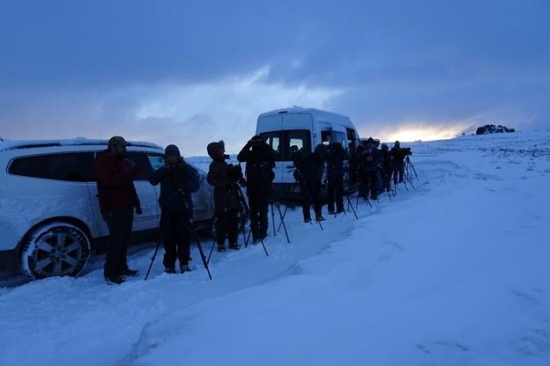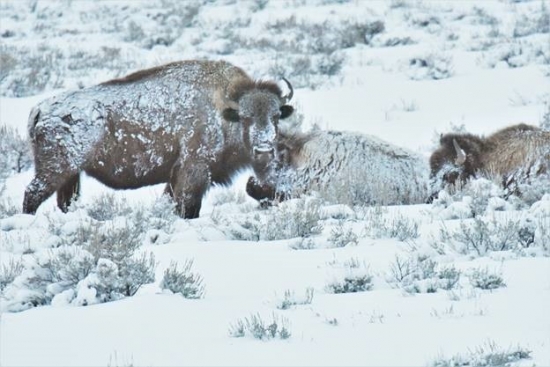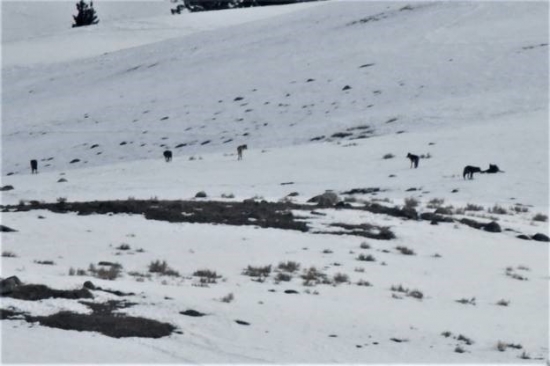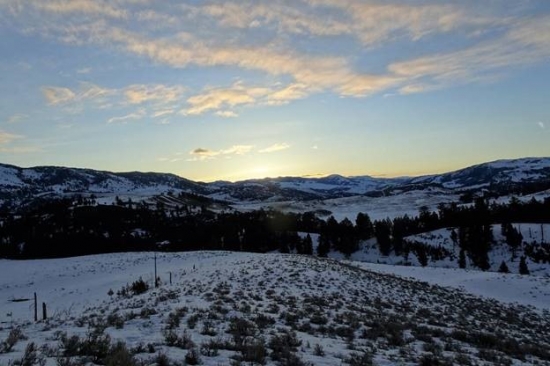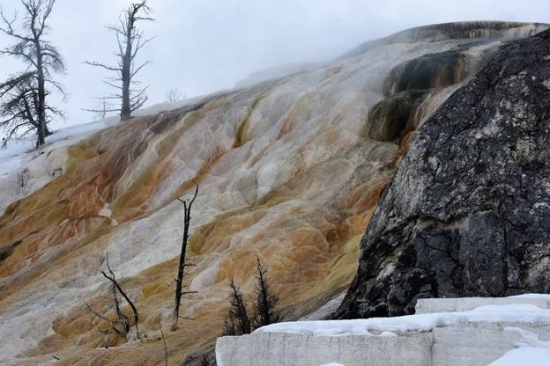Journey to Yellowstone
a narrative by Jacob Bortschellerby Editor of Yellowstone Reports
April 11, 2018
The following is narrative written by a guest on one of our recent wildlife watching programs in Yellowstone. Jacob and 9 other travelers joined us for a week in the park during late March. The program was one of our small group packages offered during the fall, winter, and spring. Check here for a description of our current trip offerings.I just got back from a week-long trip to the Yellowstone National Park area. I took a guided tour that included 3-1/2 days in the Northern end of the park searching for wolves to observe and photograph. I’m amazed at how many hoofed animals reside in the park. The approximately 100 wolves who live there depend on them as their main food source.
Notice my shot of our hotel with a buffalo (bison for you politically correct types) passing by. The town of Gardiner, Montana, is inundated with bison, elk, mule deer and pronghorns as they migrate out of the higher elevations of the park seeking warmer temperatures and food that isn’t covered by snow. The buffalo and elk carry a disease called brucellosis that can infect cattle and humans. https://www.aphis.usda.gov/animal_health/animal_dis_spec/cattle/downloads/cattle-bison.pdf
The local ranchers have an issue with the bison leaving the park but give the elk a pass due to the popularity of the elk hunt. Nearly 1000 bison are captured and slaughtered each year. The ranchers also have problems with the wolves who leave the park and attack their cattle.
Wolf photography is better in the winter for several reasons. The snow background is better for sighting them and providing a contrasting background. The packs are often seen resting in the open, during the hot weather they will seek shade. Thirdly the tourist paparazzi, of which I am a member of, is smaller, less disturbing. The down side is the weather. In January and February, it can get down to -40F. At the end of March, we had morning temps of 9, 20 and 12F with only slight winds, very manageable.
We got into place before first light to give us a better chance of a sighting. The guides listen for howls and are in radio contact with other experienced watchers. One of our guides had the eyes of an eagle.
The distance to the packs is typically ½ to 1 mile. The 60-80X scopes provide a good view but my camera with a 600mm lens and 2X teleconverter (24x total) was inadequate at the farthest ranges even with severely cropping the photos.
I was viewing this pack with a scope when one of the wolves threw his head back and I could see condensation leaving his mouth, he was howling. I counted the seconds, it was almost four. Using the lightning-thunder estimation method and assuming the speed of sound was 1,125 feet/sec he was about 4,500 feet away. 4,500 ft/5,280 ft per mile is about 0.85 miles away. Fortunately, we would get closer on another day.
A different pack (Mollies) was not quite as distant but still way out there. The sun was nice and bright so I could use a high shutter speed. The best I could do was photo the pack, not an individual. As with all animal photography getting close shots is a matter of luck...we arrived at one site just in time to see the last wolf of a pack retreat into a tree line.
The wolves had just ate and didn’t react to the buffalo.
The older male buffalo (bulls) don’t migrate into the lower terrain like the females do to enjoy the warmer temperatures. Instead they stay up at the higher elevations in the bitter cold. There are two theories as to why this happens. The first is that the females are smarter. The second is that the males would rather freeze than spend time with their family, this is called the “ice fisherman” theory.
There are many different types of animals in the park. We saw the coyote above, bears (the large males are out of hibernation), goats, bighorn sheep (above) and a moose. Of course, the park is also known for the beauty of its mountains and thermal springs.
